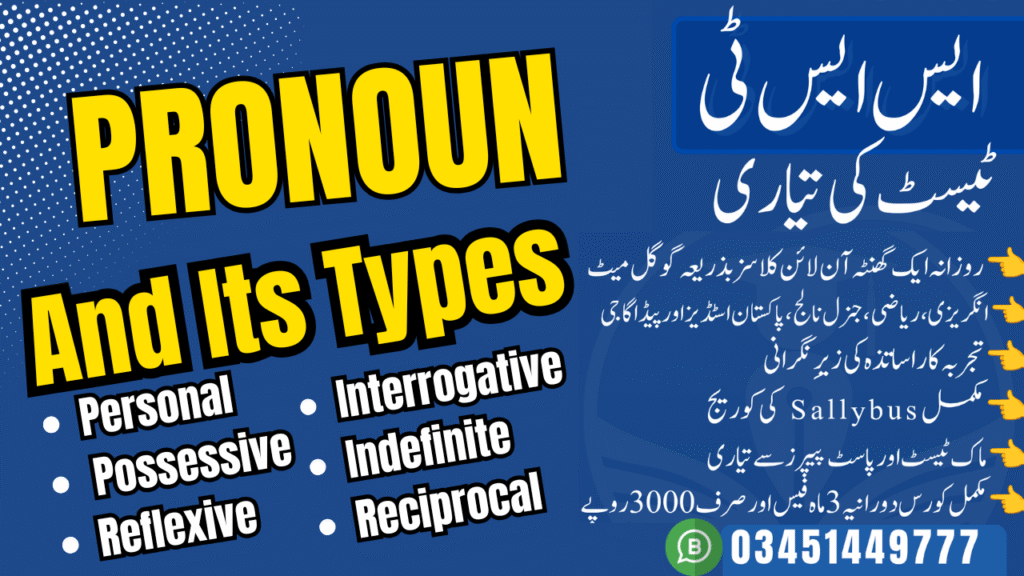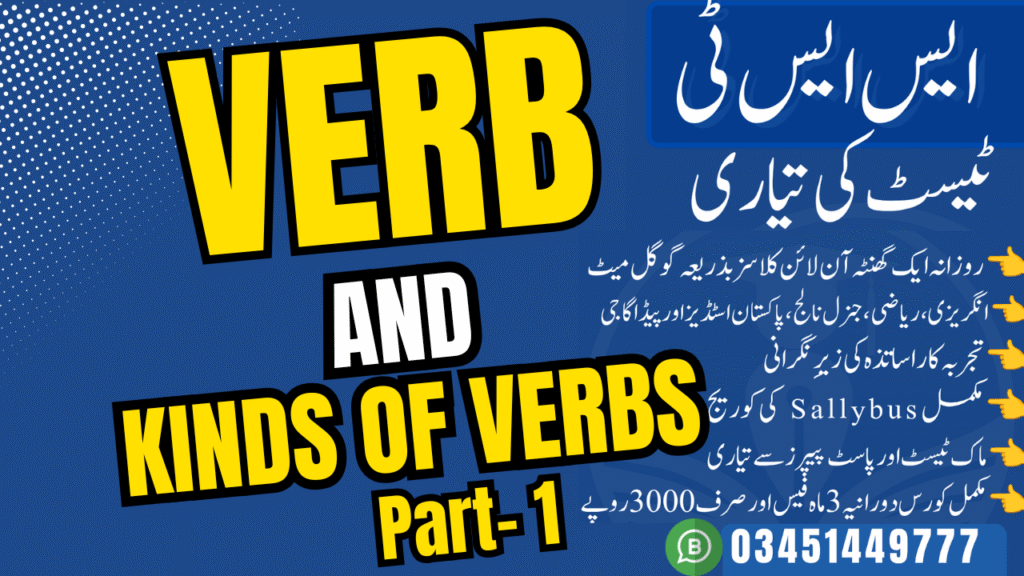Nouns: A Comprehensive Guide
ZONE OF EDUCATION | https://zoneofeducation.com
WhatsApp 0345-1449777 | 0301-1449777
A noun is often introduced in grammar as a word that names a person, place, or thing. While this fundamental definition serves as an entry point, it merely scratches the surface of a noun’s true complexity and importance in the English language. Nouns are the essential building blocks, providing the subjects and objects that give context and meaning to every sentence. Without nouns, language would lack the foundational tools to label and describe the world, from tangible objects to intangible ideas. This guide moves beyond the simplistic definition to provide a masterful, exhaustive, and nuanced understanding of the noun in all its forms. It is crafted as a definitive reference for those who seek to achieve a complete and expert command of English grammar.
Part I: Noun
1.1 Defining the Noun
A noun is a word that identifies a person, a place, a thing, or an idea. This encompasses a vast range of vocabulary, from concrete, physical objects like a book or a tree to abstract concepts like freedom or happiness.
A noun can be recognized by its function within a sentence and the words that surround it. One of the most reliable indicators is its relationship with articles. A word is often a noun if it follows an article such as “the” or “a.” For example, in the sentence “The world is round,” the word world is a noun. Similarly, in “I saw a vampire last night,” the word vampire functions as a noun. Nouns can also be preceded by possessive words, as in the phrase “our car,” or by numbers, as in “four pillows”.
A particularly useful diagnostic tool is the frame sentence test. One can use the construction “(A/An/The) _______________ seem(s) all right” to determine if a word functions as a noun. If a word makes sense in the blank, it is almost invariably a noun. For instance, both table and tables fit grammatically into the sentence, confirming their status as nouns. This test also demonstrates that a noun may or may not follow an article and can exist in both singular and plural forms.
A truly sophisticated understanding of grammar recognizes that a word’s classification is not always fixed. While a word like table is exclusively a noun, others can serve different grammatical purposes depending on their context. For instance, the word blue is an adjective in the sentence “We are going to paint our walls blue.” However, the word transitions into a noun in the sentence “The darker blue is closer to what we want” or “There are so many pretty blues in the photo”. This fluidity extends to other parts of speech as well. Gerunds, for example, are verbs that end in-ing but function as nouns within a sentence. Examples include Reading in “Reading improves your vocabulary” and dancing in “She loves dancing”. This demonstrates that a word’s part of speech is a functional concept determined by its syntactic role, rather than an inherent, immutable characteristic. A mastery of this dynamic aspect of language is a hallmark of a proficient grammarian.
1.2 The Noun’s Multifaceted Roles in a Sentence
Nouns are not static labels for people, places, or things; they are dynamic participants in a sentence, playing a variety of critical roles that shape meaning and structure. Nouns can act as the subject, a direct object, an indirect object, a subject complement, an object complement, an appositive, or even a modifier.
Every sentence must have a subject, which is the noun or pronoun that performs the action described by the verb. It is the core of the sentence, telling the reader who or what is doing, being, or experiencing something. For example, in the sentence “Maria played the piece beautifully,” the noun Maria is the subject performing the action of playing.
A noun can also serve as the direct object, the noun that directly receives the action of a transitive verb. In the sentence “Saleem Khan passed the salt,” the noun salt is the direct object; it is the thing being passed.
An indirect object is the noun that receives the direct object. It is typically a person or thing to whom or for whom the action of the verb is performed. To identify the indirect object, one can ask “to whom/what” or “for whom/what” something is being done. In “Saleem Khan passed Gul Khan the salt,” the noun Gul Khan is the indirect object because he is the recipient of the salt.
A subject complement is a noun that follows a linking verb, such as be, become, or seem, and provides more information about the subject, often by renaming it. In the sentence “Mary is a teacher,” the noun teacher is a subject complement that renames the subject Mary.
Other roles a noun can play include that of an object complement, which renames or describes the direct object. For example, in the sentence “The jury elected him chairman,” the noun chairman renames the direct object him. An appositive is a noun or noun phrase that renames another noun next to it for clarification. In the sentence “My sister, a doctor, lives in Boston,” the noun doctor clarifies who the sister is. Finally, a noun can function as a modifier, acting as an adjective to describe another noun. In the phrase “the kitchen table,” the noun kitchen modifies the noun table by specifying its type or location.
Part II: Classifying Nouns: A Hierarchical Taxonomy
2.1 General Categories: Common vs. Proper Nouns
The most fundamental classification of nouns divides them into common and proper nouns. Common nouns are the generic names for an item in a class or group, and they are not capitalized unless they appear at the beginning of a sentence.1 Examples include
girl, river, park, and bridge.
In contrast, proper nouns are the specific, unique names of a particular person, place, or thing. They are always capitalized, a rule that holds true regardless of their position in a sentence. Examples of proper nouns are Maria, Mount Vesuvius, and Yellowstone National Park.
This capitalization rule is not merely a stylistic choice; it serves as a semantic marker that signals uniqueness and specificity. While the word bridge is a common noun, it becomes part of a proper noun and is capitalized when it refers to a specific, named entity, as in The Golden Gate Bridge. This distinction underscores that a noun’s classification can be elevated by its role in a specific name, demonstrating a deeper understanding of language that goes beyond simple rule memorization.
2.2 Concrete vs. Abstract Nouns
Nouns can also be classified based on whether they can be perceived by the five senses. Concrete nouns refer to physical objects that are tangible and can be sensed. Examples include a doorbell, a keyboard, a book, or a tree.
On the other hand, abstract nouns refer to concepts, ideas, qualities, or states that cannot be perceived by the senses. These are intangible and exist as ideas rather than as physical objects. Examples include authority, goals, freedom, happiness, and courage.
2.3 Collective Nouns
A collective noun is a noun that denotes a group or collection of people, animals, or things, but refers to them as a single entity. Examples include:
- People: board, choir, class, committee, family, group, jury, staff.6
- Animals: flock, herd, pod, swarm.
- Things: bunch, collection, fleet, flotilla, pack, set.
It is important to note a common point of confusion: the conflation of collective nouns with uncountable nouns. While some collective nouns, like equipment, are indeed uncountable and referred to as a whole, most collective nouns are countable. For example, a person can have one family or two families, making family a countable noun. This is distinct from an uncountable noun like water, which cannot be pluralized. The key distinction lies in a noun’s countability, not merely its reference to a group.
The following table provides a summary of the primary noun classifications discussed.
Table 1: Noun Classifications at a Glance
| Category | Defining Characteristic | Examples |
| Common | General, non-specific name; not capitalized. | girl, river, park |
| Proper | Specific, unique name; always capitalized. | Maria, The Golden Gate Bridge, Yellowstone |
| Concrete | Perceived by the senses; tangible. | doorbell, keyboard, tree |
| Abstract | Cannot be perceived by the senses; intangible. | freedom, courage, happiness |
| Collective | Names a group as a single unit. | family, team, jury, flock |
Part III: The Number
3.1 Countable and Uncountable Nouns
The concept of number is central to the grammar of nouns, and it is governed by whether a noun is countable or uncountable. Countable nouns are those that can be counted and therefore have both a singular and a plural form. They can be used with numbers and with modifiers like “a/an,” “the,” “some,” “any,” “a few,” and “many”. For example, one can have “one
cat” or “eight cats“.
In contrast, uncountable nouns (also known as mass nouns) are nouns that are impossible to count individually because they represent a mass, a substance, or an abstract concept. They are treated as singular and do not have a plural form. These nouns fall into several categories, including:
- Abstract Concepts: information, wealth, peace, tranquility.
- Homogeneous Substances: water, sand, air, milk, chocolate.
- Collections Considered as Wholes: jewelry, equipment, furniture.
A common error is attempting to pluralize an uncountable noun, such as saying, “There are fifty-two sands in my shoe”. To correctly quantify an uncountable noun, a countable noun must be added to the phrase. For instance, the correct phrasing would be “There are fifty-two grains of sand in my shoe.” Similarly, to count furniture, one must use a countable noun like pieces: “I am looking to sell eighteen pieces of furniture“.
3.2 Regular and Irregular Nouns
The majority of English nouns follow predictable rules to form their plurals. The most common rule is to add -s to the singular form, as in dog becoming dogs. For nouns that end in ch, s, sh, x, and z, the plural is formed by adding -es, as in bus becoming buses.
However, a significant number of nouns have irregular plural forms that do not follow these rules and must be memorized. These irregular forms often derive from historical linguistic patterns.
- No-Change or Base Plurals: The singular and plural forms of these nouns are identical. This category is most commonly associated with names of animals. Examples include
sheep, deer, fish, and moose. - Mid-Word Vowel Change: The plural is formed by a change in a vowel within the word itself. For example, man becomes men, foot becomes feet, and mouse becomes mice.
- -en Plurals: A small group of nouns forms their plural by adding the ending -en. Examples include child becoming children and ox becoming oxen.
- Borrowed Words: Many nouns borrowed from other languages, particularly Latin and Greek, retain their original pluralization rules. Examples include criterion becoming criteria, phenomenon becoming phenomena, and analysis becoming analyses. It is worth noting that as some of these borrowed words become more common in English, they may also adopt regular pluralization rules (e.g. formulas is now often used interchangeably with formulae).
Table 2: Common Irregular Plural Forms
| Category | Singular Form | Plural Form |
| No-Change | sheep | sheep |
| deer | deer | |
| fish | fish | |
| Vowel Change | man | men |
| foot | feet | |
| mouse | mice | |
| -en Plurals | child | children |
| ox | oxen | |
| Borrowed Words | criterion | criteria |
| analysis | analyses | |
| fungus | fungi | |
| phenomenon | phenomena | |
| thesis | theses |
3.3 Compound Nouns
A compound noun is a noun phrase made up of two or more words that have a single, unified meaning. These nouns can appear in several forms:
- Solid or closed forms: The words are written together as one, such as housewife or basketball.
- Hyphenated form: The words are connected by a hyphen, as in mother-of-pearl or single-mindedness.
- Open or spaced form: The words are separated by a space, such as bus driver or distance learning.
To pluralize a compound noun, the plural ending is added to the “chief element” or primary noun within the compound word. For example, the plural of passerby is passersby, and the plural of black bird is black birds. For compounds that do not have a distinct primary noun, the plural is typically formed by adding an -s to the end, as in hand-me-down becoming hand-me-downs.
3.4 Special Cases (Noun Challenging the Rules)
The English language contains a fascinating category of nouns that exist only in their plural form, a group known as “pluralia tantum.” These nouns have no singular form and are always treated as plural.m This category includes:
- Tools and Items with two parts: scissors, glasses, pliers, trousers, jeans, pyjamas.
- Other Always-Plural Nouns: belongings, outskirts, clothes, savings, thanks, earnings, stairs.
To refer to a single item from this category, one must use a phrase like “a pair of.” For example, “I bought a new pair of binoculars last week.
A separate, confusing category consists of nouns that end in -s but are grammatically singular. Examples include the names of academic subjects like mathematics and physics, diseases like measles, and other words like news, billiards, barracks, and headquarters. These nouns require a singular verb for correct subject-verb agreement. For instance, one must say, “
Physics is my favorite subject” or “The news is bad”.
Table 3: Nouns That Are Always Plural
| Category | Nouns | Example Sentence |
| Two-Part Items | glasses, scissors, trousers, jeans, pliers | “That old pair of trousers will be useful.” |
| Abstract Concepts | amends, earnings, thanks, savings, riches | “She spent all her savings on a trip.” |
| Other | belongings, clothes, outskirts, stairs, surroundings | “Please take all your belongings with you.” |
Part IV: Common Mistakes and Nuanced Usage
4.1 Subject-Verb Agreement with Collective Nouns
Subject-verb agreement for collective nouns is a frequent source of error due to its nuanced nature. While a singular collective noun typically takes a singular verb and a plural collective noun takes a plural verb, the choice of verb for a singular collective noun is highly dependent on context and the intended meaning.
A singular verb should be used when the members of the group are performing an action as a single, unified entity.
- For example, “The cast is celebrating the success of the play.” In this case, the cast is acting together as one unit.
A plural verb is appropriate when the individual members of the group are performing an action independently of one another.
- For example, “The cast have been practising their lines.” Here, each member of the cast is practicing their individual lines, not acting as a unified body.
The selection of a singular or plural verb is not merely a matter of grammatical rule; it is a deliberate semantic choice. The writer or speaker decides whether to emphasize the group’s unity or the individuality of its members. This requires a deeper understanding of the meaning one wishes to convey beyond the simple syntax of the sentence.
4.2 Nouns That Change Meaning in Plural Form
A unique and often overlooked category of nouns consists of those that take on an entirely different meaning when pluralized. This phenomenon demonstrates that pluralization is not always about quantity; it can also trigger a profound shift in semantics. For example, the singular noun air refers to the atmosphere, while the plural form airs refers to affected manners or an arrogant demeanor. Similarly, a blind is a person who is unable to see, but the plural form blinds refers to a screen for a window.
This category of nouns provides a vivid illustration of how language evolves and how simple morphological changes can lead to entirely new meanings, challenging the assumption that adding an ‘s’ to a noun is solely for the purpose of indicating more than one.
Table 4: Singular vs. Plural Noun Meaning
| Singular Noun | Singular Meaning | Plural Noun | Plural Meaning |
| Air | The atmosphere | Airs | Affected manners |
| Blind | Unable to see | Blinds | Window screens |
| Custom | A tradition or habit | Customs | Duties on imports; a border checkpoint |
| Force | Strength or power | Forces | An army or military group |
4.3 The Possessive vs. The Plural
One of the most common and persistent errors in written English is the confusion between a simple plural noun and a possessive noun. The use of an apostrophe to indicate possession is often mistakenly applied to a noun that is simply plural. The root of this confusion often lies in the phonetic similarity of the -s sound for both forms.
The rule is straightforward: a simple plural noun is formed by adding an -s or -es to the singular form, as in cat becoming cats. A possessive noun, on the other hand, indicates ownership and is formed by adding an apostrophe and an -s to the noun. For example, a cat’s toy belongs to one cat, while a cat’s toys belong to one cat. The plural possessive is formed by adding an apostrophe after the -s for plural nouns that end in -s, as in the students’ books.
Understanding this distinction is crucial for clear and accurate written communication.
This article has moved beyond the rudimentary definition of a noun to reveal its true grammatical depth and versatility. It has explored the noun not just as a static label but as a dynamic functional element in a sentence, capable of assuming various critical roles. The report has detailed the hierarchical classification of nouns, from the basic common versus proper distinction to the nuanced categories of concrete, abstract, and collective nouns.
Furthermore, it has delved into the complexities of number, providing a comprehensive framework for understanding countable versus uncountable nouns and the myriad rules for regular and irregular pluralization. The analysis of special cases, such as “pluralia tantum” and nouns that change meaning in their plural form, highlights the subtle but significant challenges that can trip up even experienced grammarians.
Ultimately, a true mastery of nouns is not about rote memorization but about a profound understanding of their function, form, and context. The ability to correctly navigate the subject-verb agreement for collective nouns, or to distinguish between a possessive and a plural form, is not merely a matter of following rules; it is a testament to one’s ability to appreciate the precision and richness of language. This report stands as a definitive reference, a tool to enable the reader to achieve that high level of grammatical excellence.






